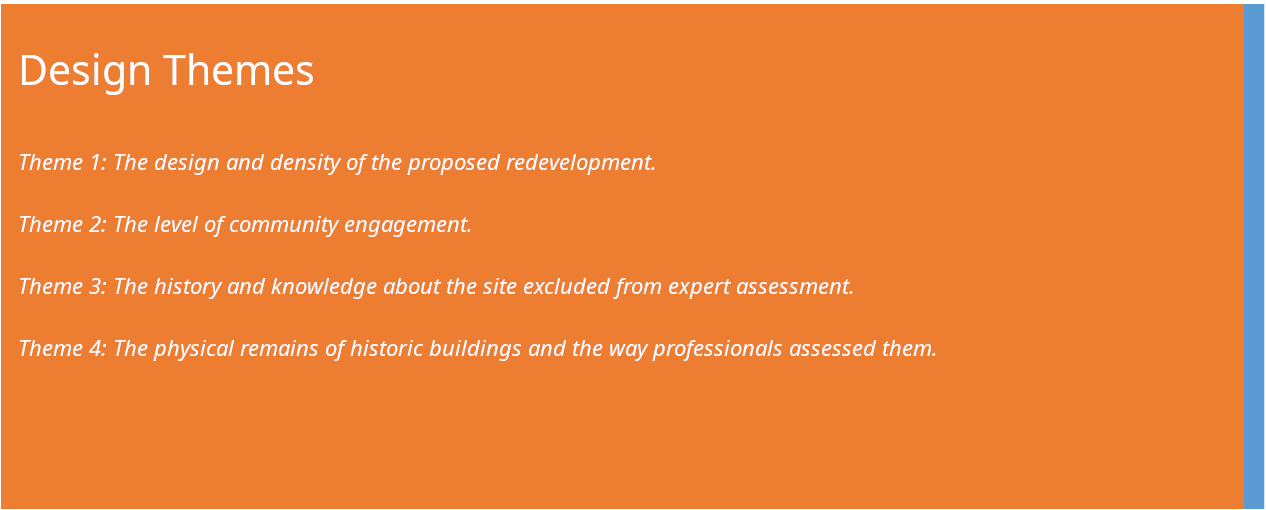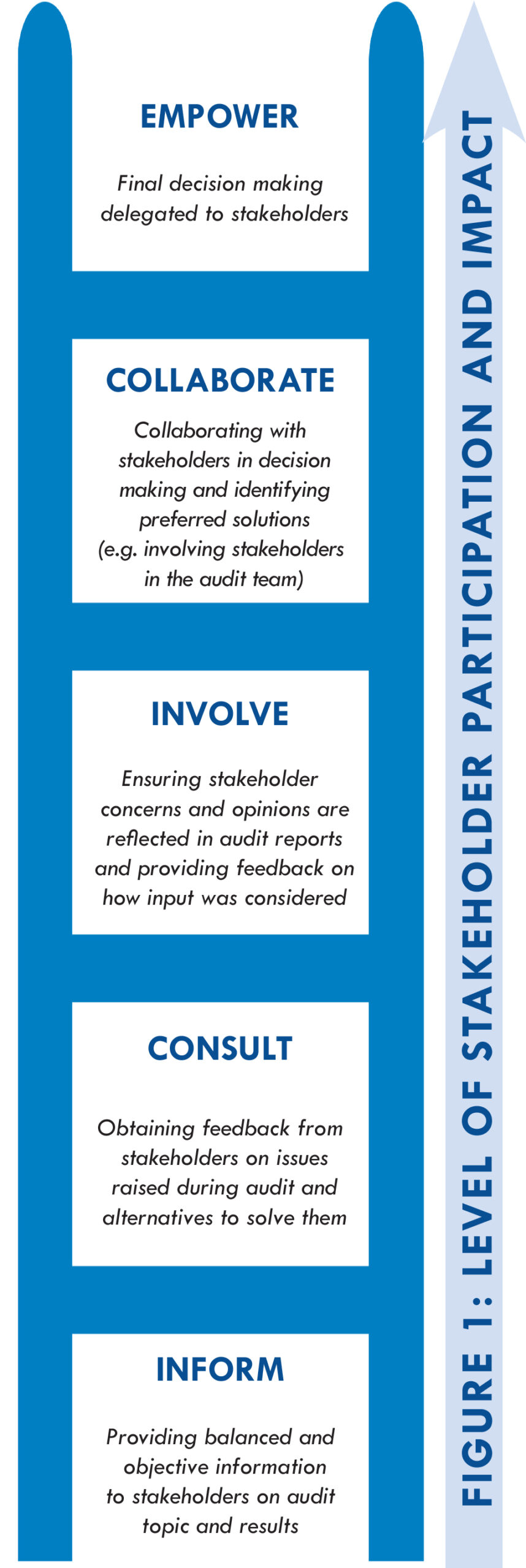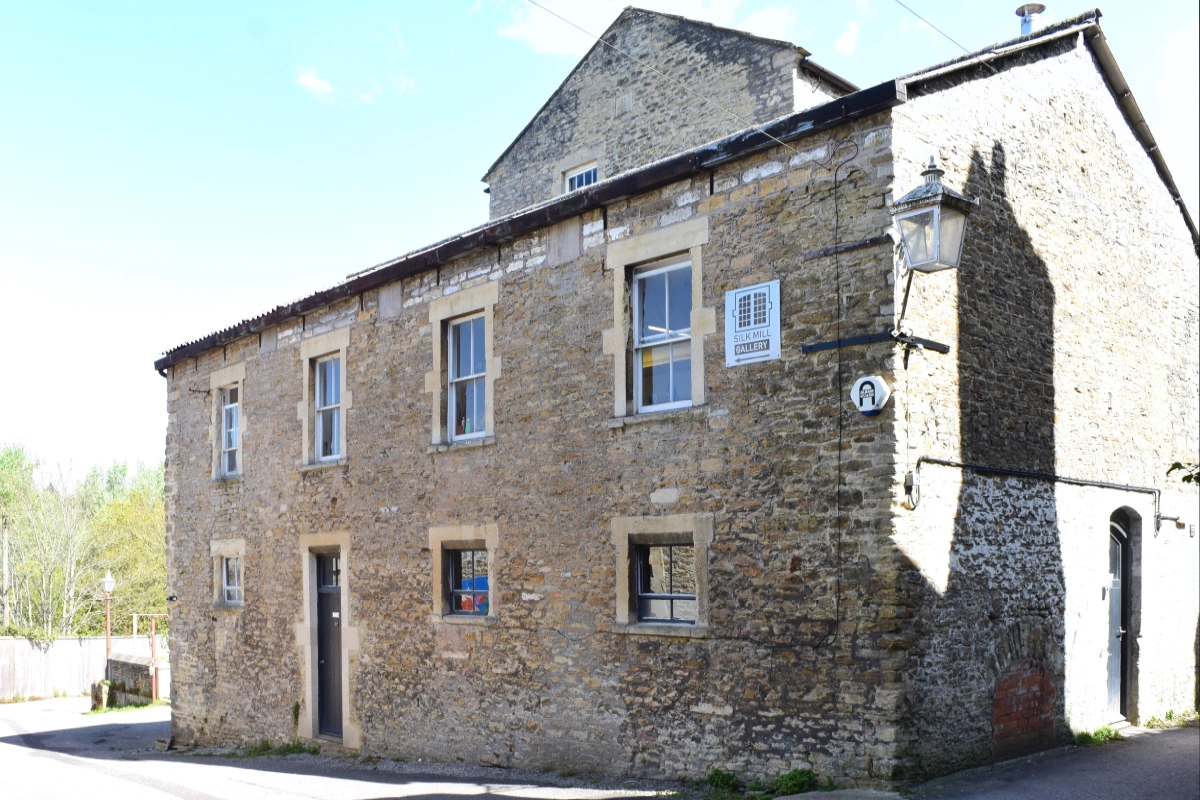(Part 3 of a 4-part Series)
The research provides detailed insights into each of the four themes, drawing on broader literature and online public comments. Those themes were also evident during interviews with the architects about their designs and during focus group discussions with local residents. These themes instigated discussions about similar ‘hot issues’ found in online comments, which were analysed. Firstly, decision-making regarding redevelopment design is often under-researched. The remaining themes became key to understanding decision-making and matured into the following: the role of community participation in placemaking, genuine inheritance of value in its own right, and multiple ethical standpoints. Reoccurring themes facilitate cross-comparison of the findings with community understanding to identify best practices and challenges. Secondly, Saxonvale 2 delivered community participation, yielding a placemaking-based design. Thirdly, good design creates a new and unique settlement layer to celebrate multi-period assets as a genuine inheritance. Fourthly, Saxonvale 2 supports transparent use of meanings of tangible and intangible heritage that integrates multiple ethical standpoints.

Plate 1: Four themes arising in online planning comments and interviews, raised during focus group discussions
Theme 1: The design and density of the proposed redevelopment
The research highlights that decision-making regarding redevelopment design is often under-researched. It distinguishes between case studies where heritage conservation was integrated into sustainable redevelopment design, and those where tensions were not resolved effectively.
Saxonvale 2 is presented as an example of comprehensive design integration. Its design code overcame challenges related to “disproportionate densification demands” and successfully reflected the surrounding character. It specifically “avoided an unsustainable level of densification” by maintaining the smaller domestic scale of the surrounding settlement and incorporating employment spaces. Good design can emerge from a common vision, as shown by community involvement in design coding.
In contrast, Saxonvale 1’s illustrative masterplan emphasised high-density living without acknowledging the “incompatible juxtaposition of scale between the proposed apartments and existing houses”.
The research generally identifies “disproportionate densification” as an additional challenge to achieving holistic heritage conservation. It asserts that “suitable levels of densification are those that local settlements can absorb without causing harm”, aligning with the NPPF’s pillars of social, economic, and cultural sustainability. Overall, “gentrification, exclusion and disproportionate densification are contrary to sustainable redevelopment”.
Theme 2: The level of community engagement
Community engagement is identified as an under-researched area, despite being a legal requirement and a potential method for improving sustainable outcomes.
Saxonvale 2 “maximised community engagement” to successfully preserve cultural significance and supported placemaking, demonstrating a long-term commitment beyond planning requirements. Its approach of “consult, involve and collaborate” resulted in more supporting comments than objections, indicating greater sustainability compared to other scheme. In contrast, Saxonvale 1’s approach was to “inform and consult”.
Figure 1: Level of stakeholder participation and impact (Penny and Hughes 2017)
The research finds that considering community perspectives early in decision-making can prevent delays, higher costs, gentrification, densification, and discord. Ineffective community consultation by developers is corroborated by public comments on planning portals.
Barriers to effective community engagement include restricted involvement in decision-making, unequal weight given to expert versus local opinion, a lack of responses to online public comments, and suspicion regarding applicants’ intentions. Effective consultation is crucial to correct this imbalance and ensure public benefits align with local values.
Consultation and participation are necessary to foster a sense of belonging (Salvador Muñoz-Viñas 2012 and 2024). The research recommends incorporating local knowledge and perspectives for placemaking through iterative parallel processes to address community frustration.
The interview appendix notes that the general public finds the planning portal interface “clunky, difficult… to use and understand”, suggesting a barrier to public participation and knowledge contribution.
Theme 3: The history and knowledge about the site excluded from expert assessment
The research highlights the importance of both tangible and intangible heritage, noting that many industrial sites carry “individual and communal intergenerational memories, tangible and intangible links that contribute to local character and identity”. Intangible connections like shared histories and traditional craftsmanship are considered as important as traditional manufacturing processes.
The research found that local intangible heritage connections, such as traditional craftsmanship and manufacturing processes, are “often overlooked”.
Decision-making processes have tended to favour tangible and aesthetic priorities over the cultural significance of intangible heritage, though there is a recognised shift towards incorporating social, economic, and cultural components.
Economic-led approaches can lead to “commodification and historic eclecticism” and the loss of cultural significance and community connections to industrial heritage sites. This diminished focus on heritage results in the loss of cultural significance and community identity.
Investigating community perspectives early in decision-making processes is an under-researched area that can help define socio-economic objectives from community perspectives.
The research suggests that holding focus groups effectively accesses local knowledge about tangible and intangible heritage significance. It advocates for balancing expert and local opinion.
Theme 4: The physical remains of historic buildings and the way professionals assessed them
The research emphasises the integration of heritage conservation into design strategies for sustainable redevelopment. It notes that refusal of permission on heritage grounds is frequent, leading to vacancy and disrepair, which is unsustainable. Demolition should be a last resort, as disrepair leads to the loss of valuable heritage resources.
The research indicates that adaptive reuse is becoming more economically attractive. Planning authorities are developing policies and assessments to prioritise heritage conservation.
Two main assessment forms are identified: standalone specialist reports and interdisciplinary reports like Conservation Management Plans (CMPs) and Heritage Impact Assessments (HIAs). HIAs are seen as a way to ease pressure caused by high volumes of technical submissions.
At Saxonvale 1, “few investigations were undertaken” before demolition and density principles were permitted. The extent and type of investigation were deemed insufficient given the site’s heritage, suggesting more buildings could have been retained despite claims of poor physical condition. The loss of buildings at Saxonvale is exacerbated by the lack of “permissions needed before demolition”.
Saxonvale 2 stands out for its principle of retaining industrial heritage and valuing non-designated assets equally, contrasting with Saxonvale 1’s prioritisation of designated heritage.
The research highlights a trend of “downplaying” the importance of non-designated assets and suggests that professionals need to place more emphasis on intertwining attributes of site significance and industrial history.
Recommendations include applying prior approval exemptions for demolition to protect under-designated assets and clarifying the NPPF term ‘proportionate’ to ensure comprehensive assessments and improved quality of specialist input.
The interview with Shane Gould (Historic England) confirms their role in providing expert advice on industrial heritage reuse and promoting good practice. Further interviews also reveal challenges with the variable survival rate of planning archives and public access to digital documentation.
Published references
Norton, Penny, and Martin Hughes. Public Consultation and Community Involvement in Planning: A Twenty-First Century Guide. London: Routledge, 2017.
Muñoz-Viñas, Salvador. Contemporary theory of conservation. Tongji University Press, 2012. and Muñoz-Viñas, Salvador. ‘The End of Conservation?’ Studies in Conservation, 23 July 2024, 1–13.


No Responses